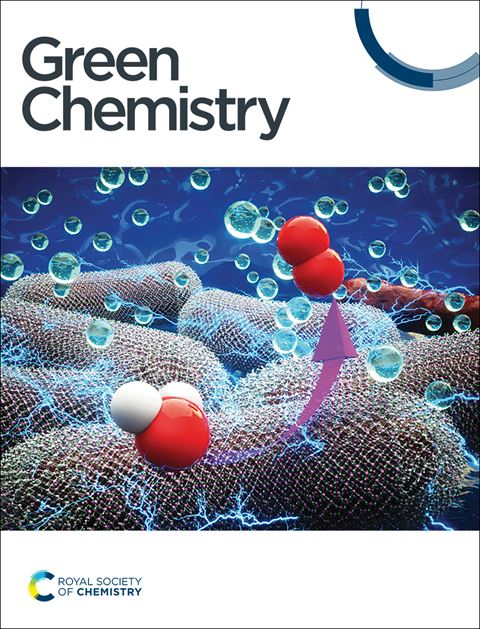Anion doping promotes electrocatalyst reconfiguration for efficient C–C bond cleavage of 4-methylcyclohexanol†
IF 9.3
1区 化学
Q1 CHEMISTRY, MULTIDISCIPLINARY
引用次数: 0
Abstract
Electrochemical cleavage of the C–C bond is primarily employed to transform organic molecules derived from biomass into valuable short-chain chemicals. However, achieving high reaction activation for the cleavage of C–C bonds under mild conditions continues to present a significant challenge. We prepared NiX/GF (X represents doped anionic elements, S, Se, P) and obtained NiX-R/GF through reconfiguration by electrochemical activation using cyclic voltammetry. Among the prepared materials, Ni2P-R/GF exhibited favorable electrochemical activity and achieved a high yield (88.1%) of 3-methyladipic acid through the oxidation of 4-methylcyclohexanol. Comprehensive ex/in situ electrochemical experiments demonstrate that incorporating P results in a reduced reconfiguration potential and a heterogeneous interface between NiOOH and Ni2P. Density functional theory (DFT) calculations demonstrate that the enhanced performance exhibited by the reconfigured electrocatalyst is attributed to its unique geometric and electronic structural characteristics. The strategy of anion doping to enhance the electrochemical oxidation performance of anodes presents a sustainable approach for breaking C–C bonds.

求助全文
约1分钟内获得全文
求助全文
来源期刊

Green Chemistry
化学-化学综合
CiteScore
16.10
自引率
7.10%
发文量
677
审稿时长
1.4 months
期刊介绍:
Green Chemistry is a journal that provides a unique forum for the publication of innovative research on the development of alternative green and sustainable technologies. The scope of Green Chemistry is based on the definition proposed by Anastas and Warner (Green Chemistry: Theory and Practice, P T Anastas and J C Warner, Oxford University Press, Oxford, 1998), which defines green chemistry as the utilisation of a set of principles that reduces or eliminates the use or generation of hazardous substances in the design, manufacture and application of chemical products. Green Chemistry aims to reduce the environmental impact of the chemical enterprise by developing a technology base that is inherently non-toxic to living things and the environment. The journal welcomes submissions on all aspects of research relating to this endeavor and publishes original and significant cutting-edge research that is likely to be of wide general appeal. For a work to be published, it must present a significant advance in green chemistry, including a comparison with existing methods and a demonstration of advantages over those methods.
 求助内容:
求助内容: 应助结果提醒方式:
应助结果提醒方式:


